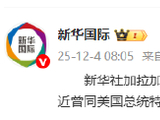China's Ambitious Approach to AI Governance and Development
AI Safety and Global Policy Dialogue
In a recent event organized by the United Nations Disarmament Research Institute in Geneva, Chinese Special Envoy to Disarmament Shen Jian outlined China's vision for the global governance of artificial intelligence (AI). As reported by Xinhua, Shen emphasized the necessity for global cooperation in AI to ensure safety and ethical standards. He pointed out the lack of trust among major powers in the AI sector and criticized certain nations for their national security-driven policies that limit semiconductor exports which can hinder AI development. Shen Jian's speech highlighted the potential for AI misinterpretation in military use, urging for a collective international approach to manage AI's risks and promote its beneficial aspects.
China's proposal, called the "Global AI Governance Initiative," advocates for collaborative and sustainable safety views, aiming to foster open, fair, and efficient governance frameworks. By endorsing dialogue and cooperation, the initiative seeks to harness AI technology for the benefit of humanity. China's effort to promote its vision through international diplomatic channels is indicative of its strategy to play a central role in shaping the future rules of AI development and usage globally.
The release from Xinhua underscores China's intent to influence AI standards and practices on an international platform, possibly countering narratives that paint China's AI ambitions as aggressive or improperly aligned with global norms.
AI's Role in Automotive Industry and Regional Collaboration
On another front, a report from Sina highlights a significant discussion between Chen Gang, Secretary of Guangxi Autonomous Region Party Committee, and executives of a Chinese automobile company specializing in AI-enabled vehicles. This meeting focused on the potential for AI to transform the automotive industry, advocating for further strategic cooperation and win-win development approaches.
These discussions also reflect a broader aim to capitalize on national opportunities such as state-backed AI competency plans. This aligns with China's ambition to fast-track the development of an AI innovation hub, potentially at the epicenter of collaboration with ASEAN nations. Such regional initiatives reflect a commitment to making Guangxi a "bridgehead fortress" for engaging with the Southeast Asian market, driving regional growth through AI advancements.
The narrative presented by Sina suggests a focus on technological excellence and integration, positioning Chinese firms as both collaborators and leaders in utilizing AI within critical industries. The emphasis is on creating mutually beneficial partnerships that enhance technological capabilities and market reach, which also complements China's diplomatic aim of being seen as a responsible and progressive player in AI.
Together, these articles reflect China's dual strategy of engaging in robust international policy dialogue, while simultaneously advancing domestic AI capabilities, particularly in sectors like automotive, where technological breakthroughs could yield significant global and economic benefits. Through these efforts, China aims to solidify its role not just as a participant but as a leader in the ongoing AI revolution that is reshaping industries and geopolitics alike.



